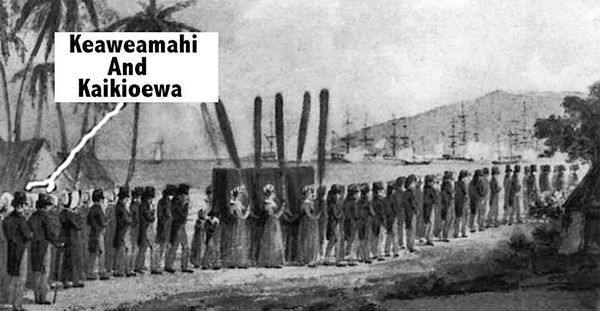Although high chiefess Keaweamahi (?-1848) — known also by her Christian name of Amelia — was initially opposed to foreign ways and the Christianity that American Protestant missionaries first introduced into Hawaii in 1820, she nevertheless eventually became an early
Although high chiefess Keaweamahi (?-1848) — known also by her Christian name of Amelia — was initially opposed to foreign ways and the Christianity that American Protestant missionaries first introduced into Hawaii in 1820, she nevertheless eventually became an early Christian convert.
Both she and her husband, Kaikioewa — the governor of Kauai from 1825 to 1839 — assisted Waimea missionary Rev. Samuel Whitney in proselytizing the people of Kauai.
They made tours of the island to instruct and encourage people in the Protestant religion, and gave support to Whitney’s schools where Scriptures were taught, one of which was conducted by Keaweamahi herself.
Their residence at Waimea was a thick stone house built for Kaikioewa in 1826 that presently serves as the parsonage of the pastor of the Waimea United Church of Christ.
At Waimea, Kaikioewa also directed the construction of a 90- by 30-foot chapel for Rev. Whitney, which Kaikioewa described as “the best built chapel in the islands.”
When Kaikioewa died, Keaweamahi became the island’s interim governor, a post she would retain until she was replaced by Princess Kekauonohi in 1842.
On Oahu in July 1842, Francis Warriner, a midshipman from the United States frigate “Potomac” in port at that time, described Keaweamahi and the tapa cloth she gave him.
“Amelia Keaweamahi possessed an open countenance, and a frank and cheerful disposition. She made numerous inquiries about my friends in America, and was very desirous to know whether I had parents and brothers and sisters living.
“She presented me with a generous donation of tapa cloth, and one garment entirely whole, with a black pelerine and cap ribbon. The cloth was quite handsome, made from the inner bark of the paper mulberry, and much taste and fancy were displayed in the variety of patterns with which it was painted. The whole is done with sticks dipped in paint and guided by the eye, and the colors are extracted from vegetable substances.”



